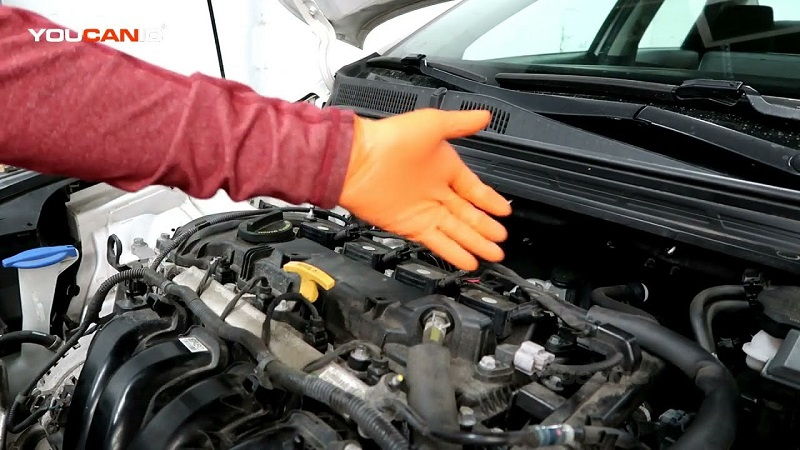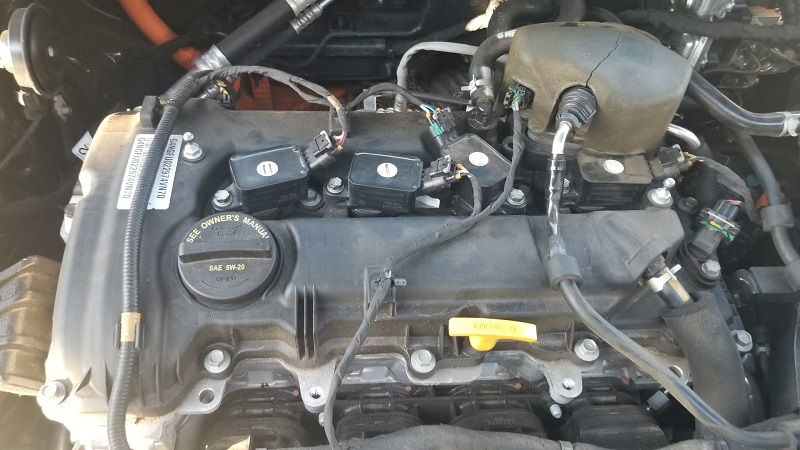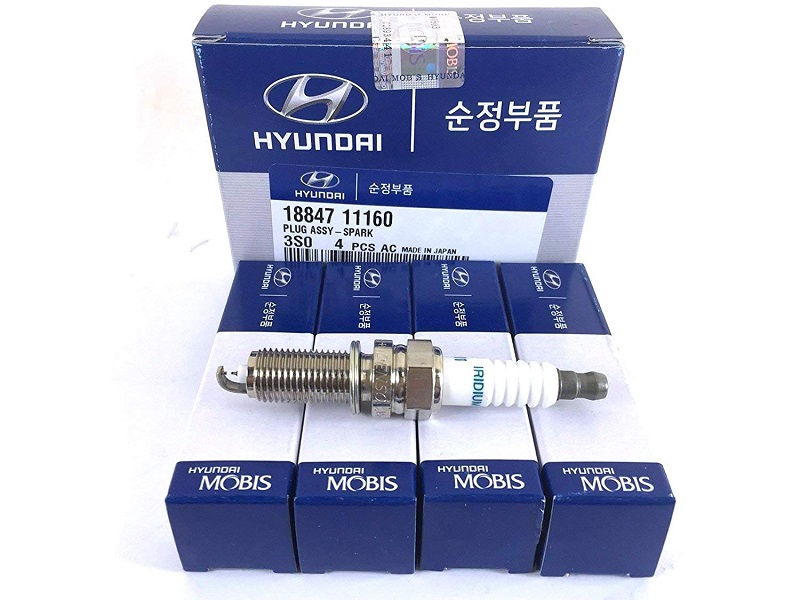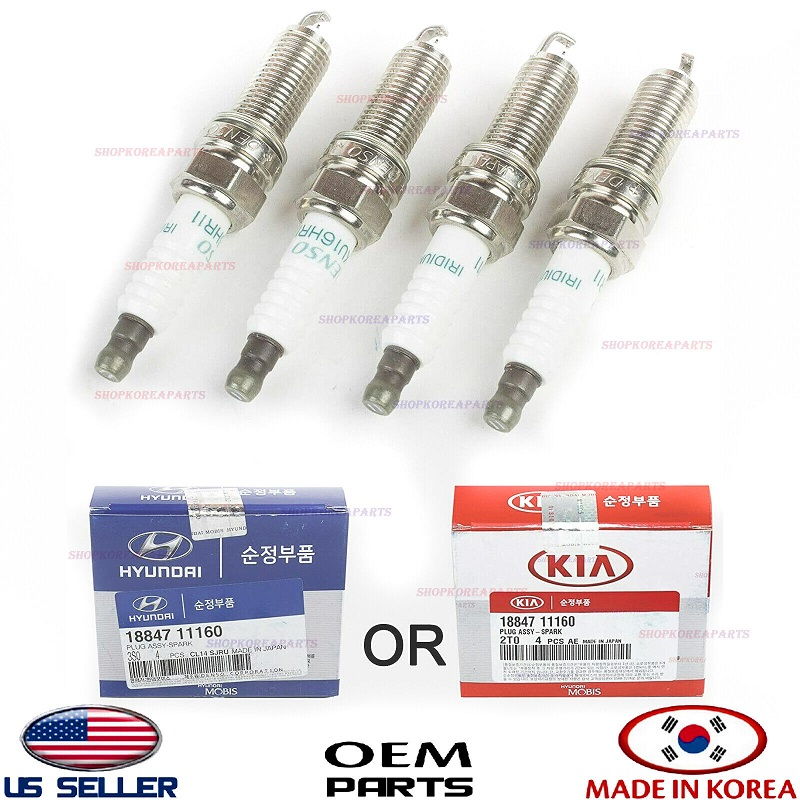This post contains affiliate links. This means I will make a commission at no extra cost to you should you click through and make a purchase [ “As an Amazon Associate, I earn from qualifying purchases.” ]. Read the full disclosure here.
2016 Hyundai Sonata Spark Plugs GuideMechanic.Com When it comes to maintaining your 2016 Hyundai Sonata, one crucial aspect that often gets overlooked is the spark plugs.
Spark plugs play a vital role in the ignition process of your vehicle, ensuring a smooth and efficient combustion.
However, understanding the importance of spark plugs and knowing how to properly maintain them can be a daunting task for many car owners.
In this comprehensive guide, we will delve into the world of 2016 Hyundai Sonata spark plugs, providing you with all the information you need to know to keep your vehicle running at its best.
From understanding the function of spark plugs to knowing when to replace them and the different types available, this article will serve as your go-to resource for spark plug maintenance.
Signs of Failing Spark Plugs

Failing spark plugs can lead to various issues, including decreased fuel efficiency, rough idling, and even engine misfires.
See Also: NGK BPR6ES Cross Reference
Recognizing the signs of failing spark plugs is essential to prevent further damage to your vehicle. Here are some common symptoms that indicate your spark plugs may need replacement:
1. Decreased Fuel Efficiency
If you notice a sudden decrease in fuel efficiency, it could be a sign that your spark plugs are failing. As spark plugs wear out, they may not ignite the air-fuel mixture efficiently, leading to incomplete combustion and wasted fuel. This can result in reduced mileage and increased fuel consumption.
2. Rough Idling
When spark plugs are worn or damaged, they may not provide a consistent spark, causing the engine to idle roughly.
You may notice vibrations or shaking when the vehicle is at a standstill. If you experience rough idling, it is worth checking the condition of your spark plugs.
3. Engine Misfires
A misfiring engine is a clear indication that there is a problem with the spark plugs. Engine misfires occur when the spark plugs fail to ignite the air-fuel mixture in the combustion chamber correctly.
This can result in a loss of power, rough running, and even potential damage to the engine if left unaddressed.
4. Difficult Starting or Slow Acceleration
Worn or faulty spark plugs can make it challenging to start your 2016 Hyundai Sonata. If you find that the engine cranks for an extended period before starting or experiences a delay in acceleration, it may be time to check and replace your spark plugs.
5. Increased Emissions
Faulty spark plugs can lead to incomplete combustion, resulting in higher emissions. If your vehicle fails an emissions test or you notice an increase in exhaust emissions, it is worth examining the condition of your spark plugs.
6. Lack of Engine Power
When spark plugs are worn, they may not provide a strong enough spark to facilitate efficient combustion.
This can lead to a lack of engine power and reduced overall performance. If you notice a decrease in power when accelerating or climbing hills, it could be a sign that your spark plugs are due for replacement.
When to Replace Your Spark Plugs
Regular spark plug maintenance is crucial to ensure optimal engine performance and fuel efficiency. But how often should you replace your spark plugs? While specific intervals may vary depending on factors such as driving conditions and the type of spark plugs used, here are some general guidelines:
Mileage-Based Replacement
Many manufacturers recommend replacing spark plugs every 30,000 to 100,000 miles. The exact mileage may vary depending on the make and model of your vehicle.
Consult your owner’s manual or the manufacturer’s recommendations for the specific mileage interval for your 2016 Hyundai Sonata.
Time-Based Replacement
In addition to mileage, it is also important to consider the age of your spark plugs. Even if your vehicle has not reached the recommended mileage interval for spark plug replacement, it is a good idea to inspect them regularly.
Over time, spark plugs can deteriorate due to exposure to heat, contaminants, and normal wear and tear. As a general rule of thumb, consider replacing spark plugs that are more than five years old, regardless of mileage.
Different Types of Spark Plugs
Not all spark plugs are created equal, and understanding the different types available can help you make the right choice for your 2016 Hyundai Sonata. Here are some common types of spark plugs:
Copper Spark Plugs
Copper spark plugs have been around for a long time and are known for their excellent conductivity. They provide a reliable spark and are generally more affordable than other types of spark plugs. However, copper spark plugs typically have a shorter lifespan compared to their counterparts.
Iridium Spark Plugs
Iridium spark plugs are becoming increasingly popular due to their durability and longevity. They are made with a fine wire electrode, which requires less voltage to create a spark. Iridium spark plugs offer excellent performance and can last up to 100,000 miles or more.
Platinum Spark Plugs
Platinum spark plugs are known for their durability and resistance to fouling. They are designed to provide a consistent spark over a long period. Platinum spark plugs are often recommended for vehicles with electronic ignition systems.
Double Platinum Spark Plugs
Double platinum spark plugs feature platinum on both the center and ground electrodes. This design provides enhanced durability and improved performance. Double platinum spark plugs are commonly used in high-performance engines.
Other Specialty Spark Plugs
In addition to the above types, there are also specialty spark plugs available, such as those designed for specific performance applications or specific engine configurations. These specialty spark plugs may offer unique features or benefits tailored to specific needs.
See Also: 2006 Honda Accord Spark Plugs
How to Replace Your Spark Plugs

While replacing spark plugs may seem like a daunting task, it can be done at home with the right tools and guidance. Here is a step-by-step guide on how to replace spark plugs in your 2016 Hyundai Sonata:
Step 1: Gather the Necessary Tools
Before you begin, make sure you have the following tools:
- – Spark plug socket
- – Ratchet
- – Extension
- – Spark plug gap tool
- – Torque wrench (optional)
- – Dielectric grease (optional)
Step 2: Prepare the Vehicle
Ensure that your vehicle is parked on a level surface and the engine is cool to the touch. It is also a good idea to disconnect the negative terminal of the battery to prevent any electrical mishaps.
Step 3: Locate the Spark Plugs
The spark plugs are typically located on the top of the engine, screwed into the cylinder head. Depending on the engine configuration, you may need to remove some components, such as the engine cover or air intake, to access the spark plugs.
Step 4: Remove the Old Spark Plugs
Usinga spark plug socket attached to a ratchet and extension, carefully loosen and remove the first spark plug. Be cautious not to damage the spark plug or drop any debris into the cylinder. Repeat this step for each spark plug, one at a time.
Step 5: Inspect the Old Spark Plugs
Take a close look at the old spark plugs to assess their condition. Look for signs of wear, such as erosion, fouling, or excessive carbon buildup.
These issues can indicate underlying engine problems that may need attention. If the spark plugs appear damaged or worn, it is a good idea to replace them.
Step 6: Gap the New Spark Plugs
Before installing the new spark plugs, it is essential to check and adjust the spark plug gap, if necessary. Refer to your vehicle’s specifications or the spark plug manufacturer’s guidelines to determine the correct gap. Use a spark plug gap tool to carefully adjust the gap to the required measurement.
Step 7: Install the New Spark Plugs
Take a new spark plug and apply a small amount of anti-seize compound to the threads. This helps prevent the spark plug from seizing in the cylinder head.
Carefully thread the spark plug into the cylinder head by hand, ensuring it is straight and not cross-threaded.
Once the spark plug is hand-tight, use the spark plug socket and ratchet to tighten it further. Be careful not to overtighten, as this can damage the threads.
Step 8: Repeat for Each Spark Plug
Repeat steps 6 and 7 for each spark plug, one at a time, ensuring they are all properly gapped and installed. Take your time to avoid any mistakes and ensure a secure fit.
Step 9: Reinstall Removed Components
If you had to remove any components to access the spark plugs, now is the time to reinstall them. Make sure everything is properly aligned and securely fastened.
Step 10: Reconnect the Battery and Test
Reconnect the negative terminal of the battery and start your 2016 Hyundai Sonata. Allow the engine to idle for a few minutes to ensure everything is running smoothly. Take the vehicle for a short test drive to ensure proper performance and check for any abnormalities.
The Importance of Using OEM Spark Plugs
Using original equipment manufacturer (OEM) spark plugs is crucial for maintaining the integrity and performance of your 2016 Hyundai Sonata. OEM spark plugs are specifically designed and engineered to meet the exact specifications of your vehicle. Here are some reasons why using OEM spark plugs is important:
Precise Fit and Compatibility
OEM spark plugs are designed to fit perfectly into your vehicle’s engine. They match the thread size, reach, and heat range specifications.
See Also: 2010 Honda Civic Spark Plugs
This ensures that the spark plugs function optimally and do not cause any compatibility issues or damage to the engine.
Quality and Reliability
OEM spark plugs are manufactured to high-quality standards set by the vehicle manufacturer. They undergo rigorous testing and are made from durable materials to ensure long-lasting performance. Using OEM spark plugs guarantees reliability and minimizes the risk of premature wear or failure.
Engine Performance and Fuel Efficiency
OEM spark plugs are specifically engineered to deliver the best performance and fuel efficiency for your 2016 Hyundai Sonata.
They are designed to provide the correct spark timing and combustion characteristics, resulting in optimal engine performance and improved fuel economy.
Warranty Considerations
Using OEM spark plugs helps protect your vehicle’s warranty. In some cases, installing aftermarket spark plugs can void certain aspects of the warranty.
By using OEM spark plugs, you can ensure that your vehicle remains compliant with the manufacturer’s warranty terms and conditions.
Spark Plug Maintenance Tips
Proper maintenance of your spark plugs is essential for optimal engine performance and longevity. Here are some valuable tips and best practices for spark plug maintenance:
Regular Inspection
Inspect your spark plugs regularly to check for signs of wear, fouling, or damage. Take note of any abnormalities and address them promptly to prevent further issues.
Cleaning
If your spark plugs are slightly dirty or fouled, you can clean them using a spark plug cleaner or a wire brush. Be gentle and avoid damaging the electrodes or insulator. However, if the spark plugs are heavily fouled or damaged, it is best to replace them.
Spark Plug Gapping
Ensure that the spark plug gap is set to the manufacturer’s specifications. Use a spark plug gap tool to carefully adjust the gap if necessary. A properly gapped spark plug ensures optimal performance and combustion efficiency.
Anti-Seize Compound
When installing new spark plugs, apply a small amount of anti-seize compound to the threads. This helps prevent the spark plugs from seizing in the cylinder head and makes future removal easier.
Distributor Cap and Rotor (if applicable)
If your 2016 Hyundai Sonata has a distributor cap and rotor, inspect them regularly and replace them as recommended by the manufacturer. A worn or faulty distributor cap and rotor can affect the performance of the spark plugs.
Ignition Wires (if applicable)
If your vehicle has ignition wires, inspect them for signs of wear, cracking, or damage. Faulty ignition wires can cause misfires or weak sparks. Replace them if necessary.
Follow Maintenance Schedule
Refer to your vehicle’s maintenance schedule to determine when spark plug replacement is recommended. Following the manufacturer’s recommended maintenance intervals ensures that your spark plugs are replaced at the right time to maintain optimal performance.
Common Spark Plug Problems and Solutions

Spark plugs can encounter various problems that can affect their performance and overall engine function. Here are some common spark plug problems and their solutions:
Fouling
Spark plug fouling occurs when deposits, such as oil, carbon, or fuel, accumulate on the spark plug’s electrodes. This can lead to misfires, rough idling, and decreased performance.
See Also: 2005 Ford F150 Spark Plugs
To address fouling, consider using spark plugs with a different heat range or inspect and repair any underlying issues, such as worn piston rings or valve seals.
Overheating
Overheating of spark plugs can occur due to a lean fuel-air mixture, incorrect spark plug heat range, or inadequate cooling system performance.
Overheated spark plugs may show signs of eroded electrodes or white insulator tips. To resolve overheating issues, ensure the correct heat range of spark plugs is used and address any underlying engine or cooling system problems.
Worn Electrodes
Over time, spark plug electrodes can wear down due to normal use. Worn electrodes can lead to misfires, decreased performance, and poor fuel efficiency. If the electrodes are worn, it is recommended to replace the spark plugs with new ones to restore optimal performance.
Improper Gap
An incorrect spark plug gap can cause issues such as misfires or weak sparks. It is essential to set the spark plug gap to the manufacturer’s specifications using a spark plug gap tool. Adjust the gap carefully to ensure proper combustion and performance.
Incorrect Heat Range
Using spark plugs with an incorrect heat range can result in poor performance, misfires, or overheating. It is crucial to use spark plugs with the recommended heat range for your 2016 Hyundai Sonata.
Consult your owner’s manual or a trusted mechanic to determine the appropriate spark plug heat range for your specific vehicle.
Benefits of Regular Spark Plug Maintenance
Regular spark plug maintenance goes beyond just ensuring your vehicle starts smoothly. It offers a range of benefits that can positively impact your driving experience and your vehicle’s performance:
Improved Fuel Efficiency
Properly functioning spark plugs contribute to efficient combustion, resulting in improved fuel efficiency.
Regularly maintained spark plugs ensure that the air-fuel mixture ignites correctly, minimizing wasted fuel and maximizing mileage.
Enhanced Engine Performance
By providing a strong and consistent spark, well-maintained spark plugs promote optimal engine performance. This leads to smoother acceleration, better throttle response, and overall improved power delivery.
Reduced Emissions
Efficient combustion facilitated by well-maintained spark plugs results in reduced emissions. By ensuring that the air-fuel mixture ignites completely, spark plugs help minimize harmful pollutants released into the environment.
Reliable Cold Starting
In colder weather conditions, spark plugs play a crucial role in igniting the air-fuel mixture and starting the engine.
Well-maintained spark plugs provide reliable and consistent spark, ensuring smooth cold starts even in low temperatures.
Longer Spark Plug Lifespan
Regular maintenance, including cleaning, gapping, and timely replacement, can extend the lifespan of your spark plugs.
By addressing potential issues early on and following recommended maintenance practices, you can enjoy longer-lasting spark plug performance.
Prevention of Potential Engine Issues
Regularly maintained spark plugs help prevent potential engine issues, such as misfires or damage to othercomponents.
By ensuring that the spark plugs are in good condition, you minimize the risk of problems that can arise from faulty ignition, such as damage to the catalytic converter or other engine components.
Frequently Asked Questions about 2016 Hyundai Sonata Spark Plugs
Q: Can I replace the spark plugs myself, or should I take my car to a mechanic?
A: While replacing spark plugs can be done by yourself, it is essential to have some mechanical knowledge and the right tools. If you are comfortable and confident in your abilities, you can save money by replacing the spark plugs yourself.
See Also: 2012 Honda Accord Spark Plugs
However, if you are unsure or inexperienced, it is advisable to seek the help of a qualified mechanic to ensure the job is done correctly.
Q: How often should I inspect my spark plugs?
A: It is recommended to inspect your spark plugs every 30,000 miles or as specified in your vehicle’s maintenance schedule. Regular inspections allow you to identify any issues early on and take appropriate action.
Q: Can I mix different types of spark plugs?
A: It is generally not recommended to mix different types of spark plugs. Each type has specific characteristics and performance capabilities.
Mixing spark plugs can affect combustion and engine performance. It is best to stick with the recommended spark plug type for your vehicle.
Q: How do I know if I have the correct spark plug gap?
A: The correct spark plug gap can be found in your vehicle’s owner’s manual or in the specifications provided by the spark plug manufacturer. Use a spark plug gap tool to measure the gap and adjust it as needed to match the recommended measurement.
Q: Can spark plugs improve my vehicle’s performance?
A: Upgrading to high-performance spark plugs can potentially improve engine performance and combustion efficiency.
However, it is essential to choose spark plugs that are compatible with your vehicle and follow the manufacturer’s recommendations.
It is also important to note that spark plugs alone may not drastically transform performance and other factors, such as fuel quality and engine condition, also play a role.
Q: Can I reuse spark plugs after cleaning them?
A: It is generally not recommended to reuse spark plugs once they have been cleaned. Cleaning can remove some deposits, but it does not restore the spark plug to its original condition.
Over time, spark plugs wear out, and their performance deteriorates. It is best to replace them with new spark plugs for optimal performance and reliability.
Q: How do I dispose of old spark plugs?
A: Old spark plugs should be disposed of properly according to local regulations. Check with your local recycling center or waste management facility for guidance on how to dispose of spark plugs safely and responsibly.
In conclusion, understanding the importance of spark plugs and how to properly maintain them is vital for ensuring optimal performance and longevity of your 2016 Hyundai Sonata.
By following the guidelines and tips provided in this comprehensive guide, you can confidently take control of your spark plug maintenance and keep your vehicle running smoothly for years to come.
See Also: 2015 Hyundai Elantra Spark Plugs
Related video of Everything You Need to Know About 2016 Hyundai Sonata Spark Plugs
- Dealer Food Trucks for Sale Near Me - July 13, 2025
- Repo Food Trucks for Sale Cheap - July 13, 2025
- Seized Food Trucks for Sale at Auction - July 13, 2025

